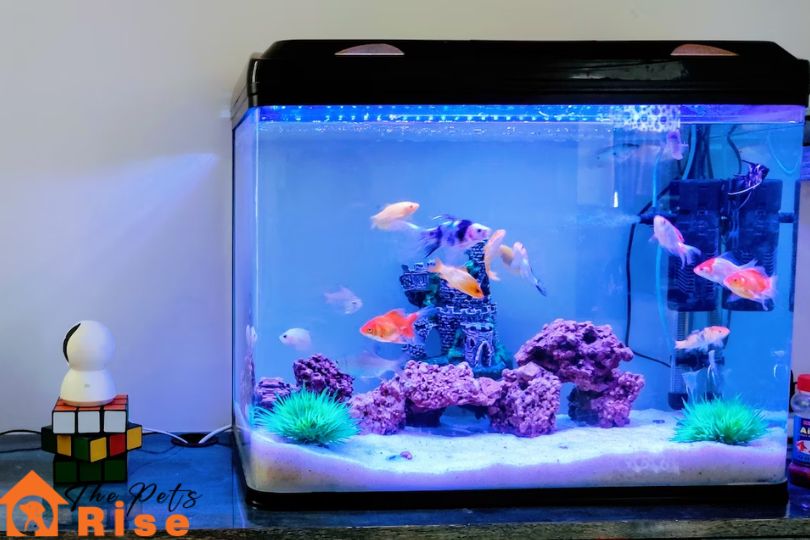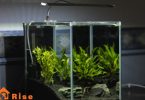Stocking an aquarium is not an easy thing for anyone who owns the aquarium for the first time. However, even the experienced one sometime may commit the mistake and will either overstock or understock the tank. While understock may not be an issue but it will make your tank look odd and empty. In the same way, a tank with too many fish per gallon will also cause your fish to have health issues and problems. With our comprehensive guide regarding stocking an aquarium, determining the tank sizes for fish and the appropriate fish per gallon you will be assured to have a thriving aquatic environment.
As passionate enthusiasts in the realm of fishkeeping, we understand the significance of creating a harmonious habitat that promotes the health and well-being of our underwater companions. In this article, we will delve into the factors influencing the size of fish tank, the importance of adequate space for fish, and how to strike the perfect balance while stocking an aquarium according to its size. So don’t commit this mistake often committed by fish tank owners.
Understanding the Relationship Between Aquarium Size and Stocking An Aquarium
Creating a suitable living space for your fish is crucial for their overall health, as it directly impacts their growth, behavior, and longevity. When it comes to stocking an aquarium, an undersized tank can result in stress, stunted growth, and increased susceptibility to diseases, while an excessively large aquarium may lead to unnecessary complications in maintaining water quality and filtration. Achieving the ideal balance between tank size and the fish population is the key to ensuring a thriving aquatic ecosystem.
Factors to Consider When Determining Tank Sizes for Fish
Several essential factors come into play when determining the optimal aquarium or tank sizes for fish for your fish. By carefully considering these factors, you can provide an environment that closely resembles their natural habitat, facilitating their well-being. Here is how you should buy your first aquarium.
-
Fish Species and Their Needs
Different fish species have varying requirements when it comes to swimming space, territorial boundaries, and overall comfort. Researching the specific needs of your chosen fish is crucial in determining the appropriate aquarium or tank sizes for fish. Some fish, such as goldfish, require ample space due to their growth potential, while others, like bettas, thrive in smaller, more contained environments. By understanding the requirements of your fish species, you can select the size of fish tank that caters to their unique needs.
-
Adult Size of the Fish
Considering the adult size of your fish is essential before thinking about to stocking an aquarium. This is because it will help you to determine the necessary tank dimensions to accommodate their growth. It is crucial to bear in mind that many fish species start small but can grow significantly over time. Providing enough space for their future growth ensures a comfortable and healthy environment for them throughout their lifespan.
-
Activity Level and Behavior
The activity level and behavior of your fish should be taken into account when deciding on an aquarium size and aquarium stocking. Highly active fish, such as tetras or danios, require more swimming space to exhibit their natural behaviors, while less active species, like some catfish, may adapt well to smaller tanks. Understanding the behavior patterns of your fish aids in creating an environment that allows them to express their natural instincts.
-
Filtration and Water Quality
Maintaining excellent water quality is vital for the health of your fish. Larger aquariums or tanks generally provide better water stability due to a larger volume, diluting waste products and reducing the impact of any sudden changes. Additionally, larger tanks offer more surface area for beneficial bacteria to thrive, aiding in the biological filtration process. Proper filtration is essential regardless of tank size, but larger tanks can offer more forgiveness in case of minor fluctuations.
Achieving the Ideal Fish Population Density
Now that we have discussed the importance of aquarium size, let us focus on achieving an appropriate fish population density that promotes a harmonious aquatic environment and is perfact for stocking an aquarium at a healthy level. Striking the perfect balance ensures that your fish have sufficient space to swim, thrive, and establish their territories.
-
Research Ideal Fish Population Density
Each fish species has its own ideal population density that allows for comfortable cohabitation. Researching the specific needs of your chosen fish species will provide valuable insights into the ideal number of fish per gallon in your aquarium. Optimal population density helps maintain good water quality and minimizes stress among fish.
-
Consider Growth Potential
Accounting for the growth potential of your fish is crucial when determining the number of fish to introduce into your tank and this will work according to the size of fish tank. Keep in mind that some species may start small but eventually require more space as they grow. Providing adequate space from the start prevents overcrowding and reduces the need for frequent rehoming or tank upgrades.
-
Gradual Introductions
When it comes to aquarium stocking, introducing fish to a new aquarium should be done gradually, allowing the biological filtration to establish itself and the nitrogen cycle to stabilize. Starting with a small number of fish and gradually increasing the population over time helps maintain a stable environment, reducing stress and potential issues.
-
Monitoring and Adjusting
Regular monitoring of your aquarium, including observing fish behavior, water parameters, and overall health, is essential after stocking an aquarium to ensure a thriving aquatic ecosystem. If any signs of stress or water quality issues arise, it may be necessary to reevaluate the number of fish in your tank and make adjustments accordingly.
Conclusion of Stocking An Aquarium
Stocking an aquarium is a crucial part to create a thriving aquatic environment where your water companion can grow and stay healthy. Also, a perfact balance will help your fish tank or aquarium to look great by all means. Creating the perfect balance between aquarium size and the fish population is a crucial aspect of successful fishkeeping. By considering the specific needs of your fish species, their growth potential, and their natural behaviors, you can provide a comfortable and thriving habitat.
Remember to maintain excellent water quality through proper filtration and regular monitoring. By implementing these guidelines and ensuring the well-being of your fish, you can create a captivating aquatic world that both you and your underwater companions will enjoy for years to come. Remember not all fish are the same. Each fish has its own distinct requirement regarding growth, feed, and spacing. So make sure you have researched well before opting for aquarium stocking with your favorite fish. Check out our further pet care guides for better ideas.







